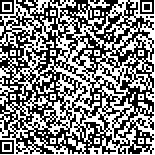| 摘要: |
|
| 关键词: |
| DOI: |
| Received:April 14, 2016Revised:June 08, 2016 |
| 基金项目: |
|
| Active disturbance rejection control: between the formulation in time and the understanding in frequency |
| Q. Zheng,Z. Gao |
| (Department of Electrical and Computer Engineering, Gannon University;Center for Advanced Control Technologies, Department of Electrical and Computer Engineering, Cleveland State University) |
| Abstract: |
| With the rapid deployments of the active disturbance rejection control (ADRC) as a bonafide industrial technology in the background, this paper summarizes some recent results in the analysis of linear ADRC and offers explanations in the frequency response language with which practicing engineers are familiar. Critical to this endeavor is the concept of bandwidth, which has been used in a more general sense. It is this concept that can serve as the link between the otherwise opaque state space formulation of the ADRC and the command design considerations and concerns shared by practicing engineers. The remarkable characteristics of a simple linear ADRC was first shown in the frequency domain, followed by the corresponding analysis in time
domain, where the relationship between the tracking error and the ADRC bandwidth is established. It is shown that such insight is only possible by using the method of solving linear differential equations, instead of the more traditional techniques such as the Lyapunov methods, which tend to be more conservative and difficult to grasp by engineers. The insight obtained from such
analysis is further demonstrated in the simulation validation. |
| Key words: Active disturbance rejection control, extended state observer, uncertain systems, stability, bandwidth |

